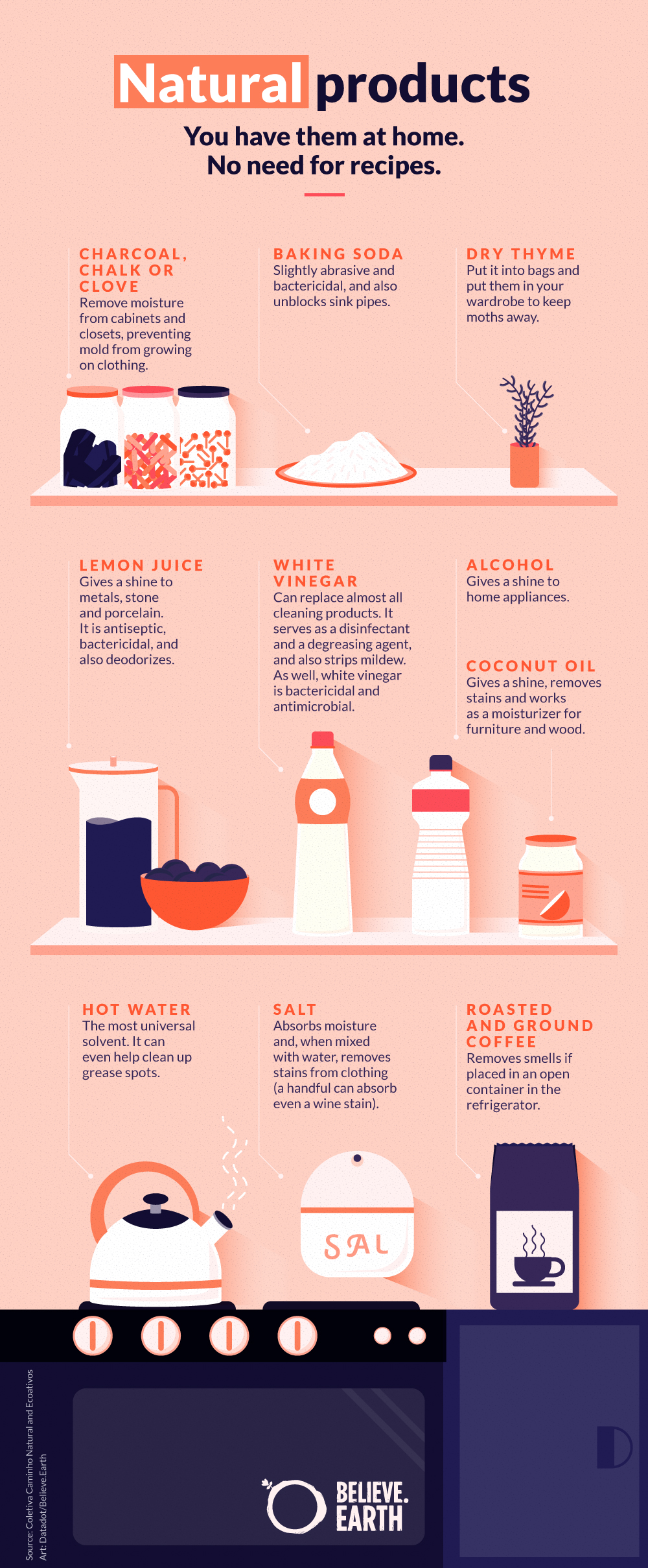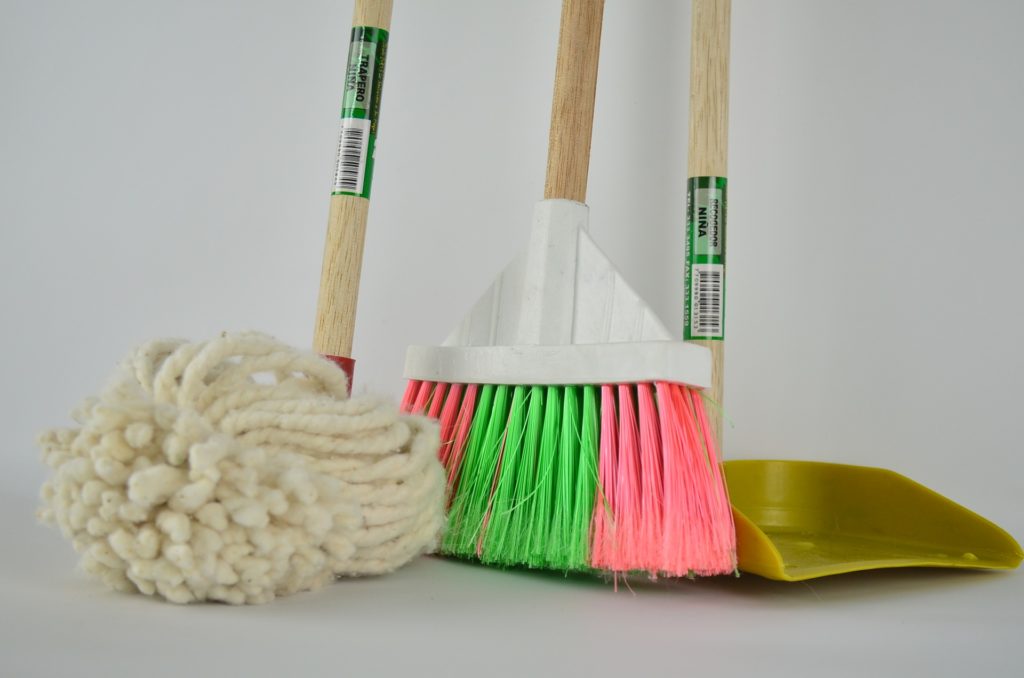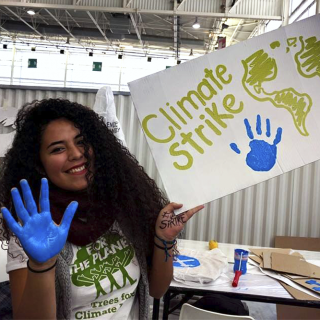Have you ever wondered where the detergent foam goes after leaving your dishes so shiny? To the sewer system, no doubt. The problem is that there is almost no proper treatment for such waste, which ends up in rivers and lakes, harming both water quality and marine life.
The foam prevents sunlight from shining through the water, which means that underwater organisms can’t photosynthesize. Birds lose the waterproofing oil in their feathers, oil that is crucial to their survival as it keeps the feathers from becoming waterlogged, allowing the birds to remain light enough to float and to fly.
But the worst cleaning agents are chlorine and bleach. “They kill everything and pollute the water, causing serious damage to species and ecosystems,” says geologist Leila Vendrametto, environmental educator at Ecoativos, a program that brings the culture of sustainability to Brazilian public school students. “These products are also harmful to human health, as they trigger long-term respiratory and skin problems.”
In 2016, cleaning products accounted for more than 11 percent of all toxic exposures reported to poison control centers in the United States, totaling 115,710 calls. A study published in the International Journal of Occupational and Environmental Health found that most cleaning products have substances that are considered irritating, dangerous or corrosive, potentially causing damage to the eyes and skin.
Another study, published in the online edition of the Journal of Respiratory and Critical Care Medicine in February, showed that women regularly engaged in cleaning, whether at home or for work, suffer a greater decline in lung function over time than women who don’t clean. That study, which followed the women over two decades, found that for those who worked as cleaners, the effect of frequent and long-term use of toxic products was equivalent to smoking slightly less than 20 cigarettes a day during the same time period.
Perhaps this data will inspire you to change your own habits. There are several economical, natural products that can replace chemicals. You don’t even need recipes, as they are ready to use just as they are. Check out the list below.

If you’re ready to get a bit more DIY, check out 3 natural products recipes that will clean your home without harming the environment or your health. Natural products are best used within 30 days, to avoid the growth of microorganisms, since they contain no petroleum-based preservatives. You’ll also need to wear gloves while making them, so that the ingredients won’t make contact with the bacteria on your skin.
NATURAL DISINFECTANT
8 cups (2l) water
1 cup (250 ml) alcohol
½ cup (125 ml) grated coconut soap
400 g green eucalyptus leaves or 1 tablespoon eucalyptus essential oil
Boil 500 ml of water with the soap over low heat. Stir the mixture constantly until the soap dissolves. Remove from heat and add the remaining water. Add the other ingredients and mix well. Place the natural disinfectant in a dark container, preferably one with a trigger spray nozzle. In the container, the product will last longer, protected from contact with external microorganisms.
Take special care with eucalyptus: it has excellent antimicrobial properties, but some people are allergic to it, so it is best to test it before use.
NATURAL LIQUID DISH SOAP
8 cups (2l) water
1 cup (250 ml) grated coconut soap
1 tablespoon (15 ml) coconut oil
1 tablespoon (15 ml) sugar (helps make more foam)
Boil 500 ml of water with the soap over low heat. Stir the mixture constantly until the soap is dissolved. Remove from heat and add the remaining water. Add the coconut oil and sugar. Stir again to incorporate all ingredients. Place the dish soap in a dark container, preferably one with a trigger spray nozzle. In the container, the product will last longer, protected from contact with external microorganisms.
NATURAL LIQUID LAUNDRY DETERGENT
8 cups (2 l) water
1 cup (250 ml) grated coconut soap
2 tablespoons (30 ml) baking soda
½ tablespoon (7 ml) lavender or lemongrass essential oil (or another, if you prefer)
Boil 500 ml of water with the soap over low heat. Stir the mixture constantly until the soap dissolves. Remove from heat and add the remaining water. Add the baking soda and the essential oil. Mix all the ingredients well and place the detergent in a dark container, where it will last longer.
Tip: Use some baking soda with vinegar or lemon in laundry to replace bleach. Let the white clothes soak for a few hours with water and lemon slices. Then, wash all clothes normally.
Choose well the storage containers for your homemade substances. “We recommend not storing mixtures in hermetically sealed jars, as these produce gases that can cause the containers to explode,” says Delmarcio Gomes, who teaches at the Chemistry Institute at University of São Paulo (USP).
Some people love making big lifestyle changes of this kind. But if you’re not ready, start slow. Check out these 8 tips on how to choose industrial products that are less harmful to the environment:
- Coconut soap, made with natural oils and fats, cleans as well as liquid dish soap.
- Natural sponges work as well as the traditional Scotch-Brite scrub sponges that pollute the environment.
- If a little liquid dish soap, liquid soap, bleach or fabric softener is left in the bottle, mix it with a little water to reuse.
- When buying cleaning products, choose large container sizes to reduce packaging waste.
- Avoid buying products with fragrances and dyes as these are more likely to cause health and environmental problems.
- When reading the labels, look for biodegradable products. Pay attention: Buzzwords such as “no solvents”, “no phosphates”, “vegetable”, “green” or “natural” do not guarantee sustainability. Instead, look for a seal from a recognized authority that has verified these claims.
- Look for products made with herbal ingredients, rather than petroleum derivatives. Organic ingredients in cleaning agents are not necessarily safer than other substances. Although the word “organic,” in reference to food, means it was grown without synthetic pesticides, in chemistry, it can refer to carbon-based products such as Volatile Organic Compounds (VOC), which release harmful vapors and can pose serious health risks.
- Choose concentrated formulas, which contain only 20 percent or less water and therefore require less packaging and transportation fuel. Then dilute the product with water.
The cleaning products recipes are authored by Coletiva Caminho Natural, a Brazilian group of researchers and activists who produce publications and offer courses on household ecology. The recipes were also analyzed by chemists Delmarcio Gomes and Giovana Freitas, both from the Chemistry Institute at the University of São Paulo (USP).
The article also draws on reports published by the International Journal of Novel Research in Life Sciences.
- Check out this study by researchers at the University of Bergen, Norway, on the health effects of chemical cleaning products.
- This article from the Organics Consumers Association details just how toxic cleaning products really are.
- Here are some tips on how to reduce the amount of pollutants in your home.




